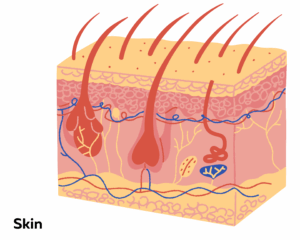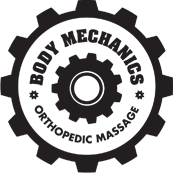Skin rolling in Massage therapy…What is the deal?
Skin rolling is a myofascial technique that involves lifting and gently rolling the skin between the fingers and thumbs, much like other techniques that slide over the skin, such as Swedish massage and sports massage or petrissage, the therapist instead picks up the skin of the underlying superficial facscia creating a rolling effect almost like a wave, this form of facsia work can be used to assess the tension of the skin as well as treat areas of restriction, tightness or pain that a client feels by moving the skin across the layers of tissue beneath.
This technique is usually performed without oil or lotion, as a firm grip on the skin is needed to manipulate the tissue effectively. In this video, you can see how the therapist runs the technique across the surface of the body like a wave, gathering the tissue together and moving it.
What does skin rolling feel like?
Depending on what area of the body you’re touching and the degree of tightness, restriction, or soreness, skin rolling can feel different. It can range from mild discomfort or tight or stuck areas to smooth and healthy areas, and sometimes, a feeling of release can happen when very tight areas of the skin are worked thoroughly.

Like forms of massage, however, the sensations you’re experiencing while on the table should always be within your tolerance. You should always be able to breathe, and you should not be “grin and bear it”. For techniques that have the potential to cause a little bit of pain communications really important between the therapist and the patient you need to be explaining how it feels to you and if the area is too sensitive the massage therapist should not harm, and there are many other techniques to select from this technique does not feel right to you.
What kinds of massages use skin rolling?
Skin rolling is commonly incorporated to many types of massage therapy, including orthopedic medical and fascia focus massage therapy sessions really when a therapist is saying they’re going to treat you, often we’re treating a ‘symptom or a feeling’ and skin rolling/the sensation of pulling the skin, might help relieve a feeling. Some other examples are:
- Releasing facial restrictions: your fascia is the connective tissue that surrounds muscles, nerves organs, and pretty much everything and it can feel tight. Sometimes skin rolling helps mobilize these tissues saturating them with good blood flow and helping you feel less stuck.
- Treating scar tissue and post surgical adhesions: after a surgery or an injury, scar tissue may bind together layers that used to move independently. Skin rolling can be used to gently work around the scar tissue and help improve mobility which intern improve blood flow and reduce discomfort and long-term healing by nourishing the skin.
- Improving local sensory awareness: it should be obvious by watching the technique that this particular modality is rather stimulating the picking up and pulling up the skin provides novel sensations, so it might be helpful to any sensory awareness, sort of problems or areas with limited circulation or numbness provided that there are no contraindications.
- Reducing muscle tension indirectly: skin rolling is mostly targeted into the surface of the skin freeing up the overly fascia can allow muscles to feel like they’re moving more efficiently and relax the body more fully. Skin rolling is often used before or between techniques, and it is rarely used as a standalone treatment.
- Identifying areas of dysfunction: When massage therapists are working, they can feel the tone of the skin and underlying muscle tissue by the amount of tension on it. Typically, areas that have good mobility and are healthy have less tension on them, but that’s not always the case. A massage therapist might assess the tension on the skin and deeper layers of the tissue just to give a good feel and decide, “What’s going on here in the overall picture?”
Who might want to try skin rolling?
Well, this sky is the limit. Whether or not skin rolling is right for you depends on your medical history and what you like and dislike during massage treatment. You can talk to your therapist to find out if it’s potentially a good treatment option to relieve your pain and discomfort. As with any technique, your therapist will use it specifically to your needs and tolerance if you are booked with a quality therapist.
Some examples of reasons that you might use skin rolling are chronic pain, limited range of motion, scar tissue, old injuries that lack mobility, and just generally feeling tight.
Who should not try skin rolling?
If you have hypermobile skin and joints, skin rolling is probably not for you. You don’t need any extra mobility in that area, and if you are on certain kinds of blood thinners, you’re going to want to avoid skin rolling as they can cause you to bruise more easily. You’re also going to want to avoid skin rolling if you bruise more easily than other people genetically.
In conclusion
Skin rolling is a really interesting massage therapy technique that comes out of the fascia work lineage of techniques. It has a lot of potential, especially if you like the sensation of your skin being mobilized and pulled upon. It has varied uses and is frequently utilized in the massage therapy community. It has great potential to help manage the skin we live in. If you’re curious about whether or not this technique is right for you, reach out to our reception and talk about it! Lets love the skin your in!!!
